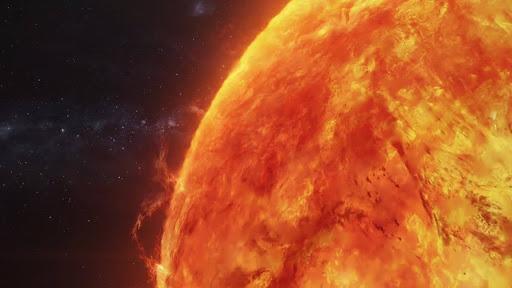
‘Peacock Jets’ on Sun Linked to Magnetic Flux Cancellation
The Sun, our star, is a fascinating and complex celestial body that has long been the subject of scientific study. From solar flares to coronal mass ejections, the Sun’s dynamic behavior has a profound impact on our planet and its technological infrastructure. In recent years, researchers have made significant strides in understanding the mechanisms that drive the Sun’s activity, and a new study has shed light on the role of magnetic flux cancellation in the formation of “peacock jets” – recurrent fan-shaped eruptions in the Sun’s lower atmosphere.
What are Peacock Jets?
Peacock jets are a type of solar feature that has been observed by spacecraft and ground-based telescopes for decades. These jets are characterized by their striking fan-shaped appearance, with bright, hot plasma streaming away from the Sun’s surface. They are typically several thousand kilometers long and can be seen in the Sun’s chromosphere, the layer of the Sun’s atmosphere just above the photosphere.
Previous research has suggested that peacock jets are powered by magnetic reconnection, a process in which magnetic field lines are broken and re-formed, releasing a vast amount of energy in the process. However, the exact mechanisms driving these jets have remained unclear.
Magnetic Flux Cancellation: The Key to Peacock Jets
The new study, published in the journal Nature, reveals that magnetic flux cancellation is the driving force behind peacock jets. Magnetic flux cancellation occurs when two opposing magnetic fields meet and cancel each other out, releasing a vast amount of energy in the process. This energy is then converted into heat and radiation, powering the peacock jet.
The researchers used a combination of observations from the Solar Dynamics Observatory (SDO) and the Interface Region Imaging Spectrograph (IRIS) spacecraft, as well as computer simulations, to study the formation of peacock jets. They found that the jets are triggered by the cancellation of magnetic flux in the Sun’s chromosphere, which occurs when two oppositely directed magnetic fields meet.
The Role of Magnetic Flux Cancellation
Magnetic flux cancellation plays a crucial role in the formation of peacock jets. When two magnetic fields meet, they either cancel each other out or merge. In the case of peacock jets, the cancellation of magnetic flux releases a vast amount of energy, which is then converted into heat and radiation. This energy is what powers the jet, causing it to erupt from the Sun’s surface.
The researchers found that the magnetic flux cancellation occurs in a specific region of the Sun’s chromosphere, known as the “magnetic null point”. This region is characterized by a complex interplay of magnetic field lines, which can become tangled and twisted, leading to the cancellation of magnetic flux.
Implications for Space Weather and Technology
The discovery of magnetic flux cancellation as the driving force behind peacock jets has significant implications for our understanding of space weather and its impact on our technological infrastructure. Peacock jets are a type of solar feature that can emit a vast amount of energy into space, which can interact with Earth’s magnetic field and atmosphere. This can cause a range of effects, from beautiful aurora displays to disruptions to satellite communications and power grids.
Understanding the mechanisms that drive peacock jets and other solar features is crucial for predicting space weather and safeguarding our technology. By studying the Sun’s magnetic field and its interactions with the solar wind, scientists can better predict when and how solar storms will impact our planet.
Conclusion
The discovery of magnetic flux cancellation as the driving force behind peacock jets is a significant breakthrough in our understanding of the Sun’s dynamic behavior. This research has important implications for our understanding of space weather and its impact on our technological infrastructure. By continuing to study the Sun and its complex magnetic field, scientists can improve our ability to predict and prepare for space weather events, protecting our technology and ensuring the safety of our planet.
Source:






